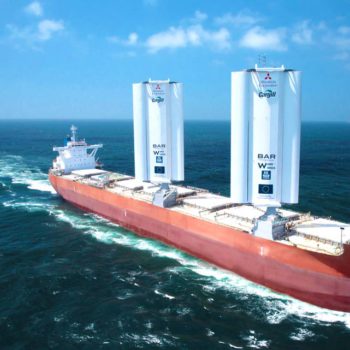|
|
Typhoon Doksuri, a formidable storm of unprecedented ferocity, unleashed its wrath upon China’s coastal regions last July 2023, leaving a trail of devastation in its wake. The typhoon is the second strongest to strike the Fujian province in the southeast since Typhoon Meranti in 2016 and the most potent to landfall in China in 2023.
The aftermath of the natural disaster left a trail of destruction. Beijing experienced its worst flooding in almost 50 years, while the port city of Quanzhou in Fujian had a massive power loss that affected more than 500,000 homes. It was also reported that at least 29 people were killed in the northern province of Hebei. Infrastructure lay in ruins in other areas ravaged by Doksuri, while floodwaters submerged port facilities. Trees had been uprooted strewn across the landscape, while power lines dangled haphazardly, sparking fires in some areas.
These striking scenes underscored the sheer force of the event, prompting a shutdown of local schools and businesses. The conditions also necessitated the evacuation of thousands of people and personnel from offshore oil and gas operations, as safety became an immediate concern.
With wind speeds mirroring that of a Category 2 hurricane and strong torrential rains boosted by the warm Pacific waters of July, the destruction brought by Typhoon Doksuri not only hit international news but also triggered market instability on a national and global scale.
According to a report released by Reuters, over just two months (July and August), China experienced economic losses estimated at $10 billion as factories ceased operations, vital ports were paralyzed, critical infrastructure collapsed, crops were destroyed, and thousands of individuals were displaced from their homes due to natural disasters.
Although substantial, the official damage estimate from China only accounts for immediate losses from the typhoon. The actual economic toll is expected to go higher, considering the costs for reconstruction and future-proofing against climate events. China already issued 1 trillion yuan (equivalent to $139 billion) in sovereign bonds to fund the rebuilding efforts in areas devastated by floods and investing in more resilient infrastructure.
The aftereffects of the typhoon also rippled through China’s commerce, with exports and imports showing weaker performance than predicted in July.
China Typhoon Global Repercussions
Consequently, the repercussions of the typhoon are reverberating near and far beyond China’s shores, sending shockwaves through interconnected supply chains and financial markets.
According to economist Robin Koepke at the International Monetary Fund, as cited by Reuters, Typhoon Doksuri’s disruptions to China’s ports had a domino effect on its trading partners located much further away. Countries as distant as Malta, in the Mediterranean, and Djibouti, positioned on the East African coast and a critical access point for landlocked Ethiopia, experienced the storm’s ripple effects.
With maritime transport regarded as the backbone of international trade, ports are crucial entry points for the global economy, tasked with handling approximately 50% of worldwide trade. Despite being situated on land, their waterfront locations leave them especially susceptible to extreme weather events and changing climate conditions. As storms grow more severe and sea levels rise, these vital hubs face increasing risks.

Typhoon Doksuri struck a particularly vulnerable moment for the world economy, already dealing with significant challenges due to the recent COVID-19 pandemic and geopolitical tensions. The disruptions caused by the typhoon added more stress to supply chains and industries that were already under pressure, ranging from electronics and automotive to agriculture and energy.
These additional problems have further heightened the strain on inflation rates, production processes, and consumer prices. Such events showcase how natural disasters can amplify economic issues, leading to more complex and severe implications worldwide.
A Call for Proactive Risk Management and Resilience-Building Measures
With extreme weather events expected to occur more frequently and severely, the imperative for proactive risk management and resilience-building measures has never been more urgent.
Companies are urged to enhance their climate risk management practices, integrate sustainability considerations into their business strategies, and transparently disclose their exposure to climate-related risks both to the press and public. Failure to do so poses financial risks, undermines long-term value creation, and jeopardizes corporate resilience in mounting climate challenges.
Some steps that companies can take to enhance their climate risk management practices include:
- Risk Assessment: Conduct comprehensive assessments to identify and understand the climate-related risks that could impact their operations, supply chains, assets, and stakeholders. This step includes evaluating physical risks (e.g., extreme weather events, rising sea levels) and transition risks (e.g., regulatory changes and market shifts towards renewable energy).
- Integration into Business Strategy: Add climate risk considerations into their overall business strategy, decision-making processes, and long-term planning. This measure involves embedding climate risk management into corporate governance structures, risk management frameworks, and strategic planning processes.
- Scenario Analysis: Utilize scenario analysis to evaluate different future climate scenarios and assess the potential impacts on their business. This action helps companies understand possible outcomes, anticipate challenges, and identify adaptation strategies to mitigate risks and capitalize on opportunities.
- Adaptation and Resilience Measures: Implement adaptation and resilience measures to enhance their ability to cope with climate-related risks. This step may include investing in infrastructure improvements, diversifying supply chains, implementing disaster preparedness and response plans, and improving business continuity strategies.
- Stakeholder Engagement: Engage with stakeholders, including employees, investors, customers, communities, and regulators, to understand their climate-related concerns and priorities and collaborate on developing effective climate risk management strategies.
- Data and Analytics: Invest in robust data collection, monitoring, and analytics capabilities to better understand and quantify climate risks, track performance against climate-related goals, and inform decision-making processes.
- Disclosure and Reporting: Enhance transparency and accountability by disclosing climate-related risks, opportunities, and mitigation efforts to stakeholders. This action may include adopting reporting frameworks such as the Task Force on Climate-related Financial Disclosures (TCFD) recommendations to provide standardized, comparable, and decision-useful information.
- Continuous Learning and Improvement: Foster a culture of constant learning and improvement by staying informed about evolving climate science, regulatory developments, industry best practices, and emerging technologies. This solution allows companies to direct some resources to climate risk education and adapt and refine their climate risk management strategies.
The following resources provide more information on climate-related exposures and resilience strategies and frameworks that companies of all sizes can adopt to effectively factor climate risks into their decision-making processes and ensure greater transparency and disclosures on their actions.
- The Queensland Government – This resource provides steps for companies to prepare a climate risk management plan, insights into developing adaptation strategies that enable businesses to adjust to changing climate conditions, and tips and resources for businesses to improve resource efficiency, reduce greenhouse gas emissions, and adopt sustainable practices to mitigate their environmental footprint.
- Climate Centre – This working paper from the Climate Centre, which supports the Red Cross and Red Crescent Movement, offers guidance and insights for companies to understand the various climate-related risks they may face. It also outlines strategies for companies to build resilience against climate risks and guides on measuring and reporting climate-related impacts and resilience efforts.
Likewise, the destruction caused by Typhoon Doksuri across China’s coastal provinces has starkly revealed the fragility of essential infrastructure. It has also put millions of people in considerable danger.
This situation underscores an urgent need for more robust, resilient infrastructure to withstand such natural calamities. Investment in disaster-proofing critical systems and adopting more robust construction standards are necessary to protect communities and reduce the potential for catastrophe in the face of future storms. Focusing on these improvements can help mitigate these disasters’ physical damages and human toll.
The following resources provide more information on climate-resilient infrastructure and guidance on enhancing the resilience of infrastructure networks:
- Climate-Resilient Infrastructure – This paper from the OECD offers policy perspectives and guidance on enhancing infrastructure resilience to climate change impacts. Highlights include understanding climate risks to infrastructure, policy frameworks and approaches, infrastructure governance and financing, innovative solutions and technologies, and capacity building and knowledge sharing.
- Infrastructure Pathways – This resource, developed by the International Coalition for the Sustainable Infrastructure and The Resilience Shift and delivered by Arup, offers key concepts and insights related to sustainable infrastructure development, including lifecycle phases and resilience and systems thinking.
Conclusion
Typhoon Doksuri is a stark reminder of the need for collective action to address the root causes of climate change and mitigate its worst impacts. Governments, businesses, and investors must work in tandem to fortify critical infrastructure, enhance disaster preparedness and response capabilities, and accelerate the transition to a low-carbon economy.
From reducing greenhouse gas emissions to sustainable investing and building climate-resilient infrastructure, concerted efforts are needed to safeguard against future climate-related disasters and secure a sustainable future for all.












